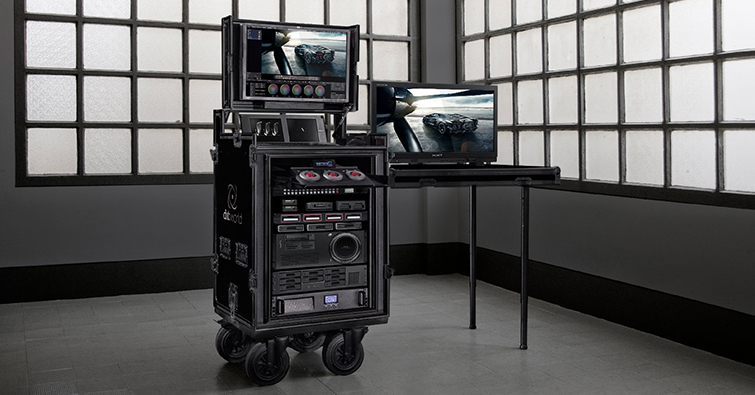
(Image: DIT Workstation via Dit World)
Wikipedia defines a digital imaging technician (DIT) as one who “works in collaboration with a cinematographer on work flow, systemization, signal integrity and image manipulation to achieve the highest image quality and creative goals of cinematography in the digital realm.”
A DIT is basically the person that links media between production and post-production. A good DIT isn’t someone who can just backup footage. They can help the first camera assistant and the director of photography get the most out of the camera. They can help with setting exposure, knowing the optimal ISO settings for the camera, and getting the most dynamic range the camera can offer, perform onset color grading, transcode dailies for VFX and editorial, and advise the production on workflows.
The DIT is ultimately answerable to the DoP but should take his or her lead from the 1st AC. Communication is vitally important on set, and having a clear chain of command keeps the department productive.
There are many people who just data dump to a spare drive without evaluating the images or verifying the data. I’ve certainly done this on a few run-and-gun projects and gotten away with it. You may feel that this workflow is fine, but you are missing out on the advantages of working with a person who is dedicated to protecting your image, as well as your data.
Assimilate Scratch for Data and Transcoding…
Scratch is a great program that I’ve used to do the following:
• On-set dailies
• Playback & review
• Conform
• Color grading
• Versioning
• Compositing
• Finishing
(Scratch is a tool that can aid with tasks that a DIT performs. In no way am I stating that solely using scratch replaces a DIT or makes you a DIT.)
Hopefully this post gives you a little insight on what all goes into the role of a DIT. I’m planning on having a DIT on the Capturing Light Podcast to talk more in detail from their personal experience so stay tuned.